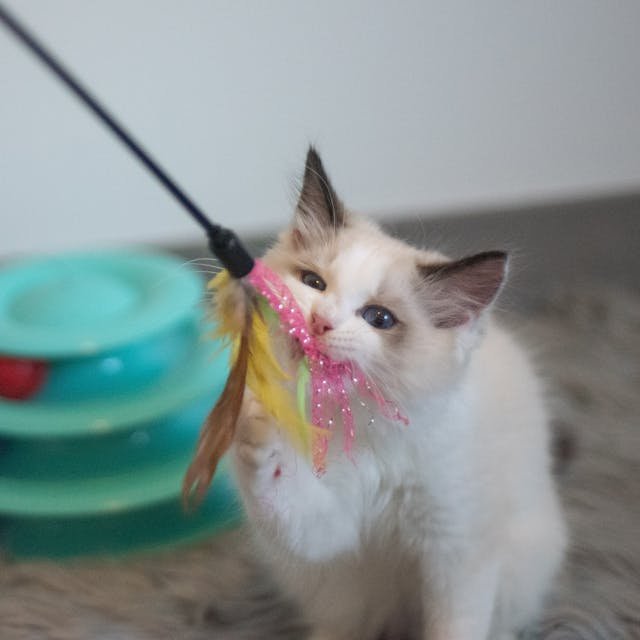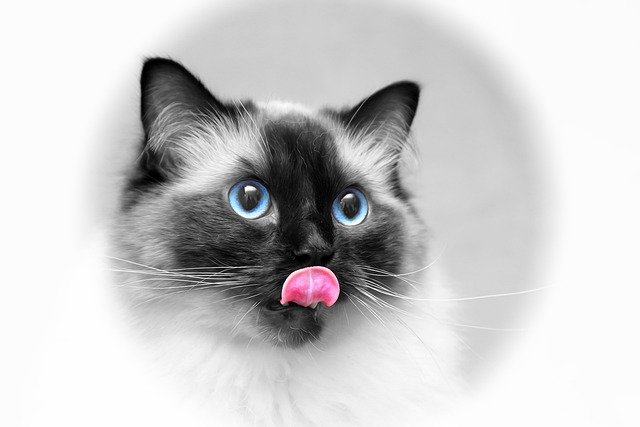
If you’ve ever wondered, “Can you get a black and white ragdoll cat?” this USA-focused post will answer that and more. You’ll explore their origins, compare them to other point varieties, learn how to find a kitten, and master care routines that keep them healthy and happy.
What Is a Black and White Ragdoll Cat?
A black and white ragdoll cat, often called a tuxedo ragdoll cat, flips the usual color script. Instead of cream or ivory bodies with darker points, these cats wear deep black coats streaked with bright white patches on their chests, paws, faces, and bellies.
However, TICA (the International Cat Association(TICA)) and the Cat Fancier’s Association (CFA) list only six standard Ragdoll cat colors; a rare pairing of the “colorpoint inhibitor” gene with a white-spotting gene lets this tuxedo look appear in some litters.
Back in 1963, Ann Baker’s first ragdoll litter (1963) produced a solid black kitten named Blackie and a pure white kitten named Josephine.
Breeders saw hints of a rare mutation in ragdoll cats, but it took decades of gentle selection before black and white ragdoll kittens reemerged. Today, a reputable ragdoll breeder can track pedigrees—even for colors outside the official Ragdoll breed standard.
Tuxedo Ragdoll Cats vs. Seal Point & Flame Ragdolls
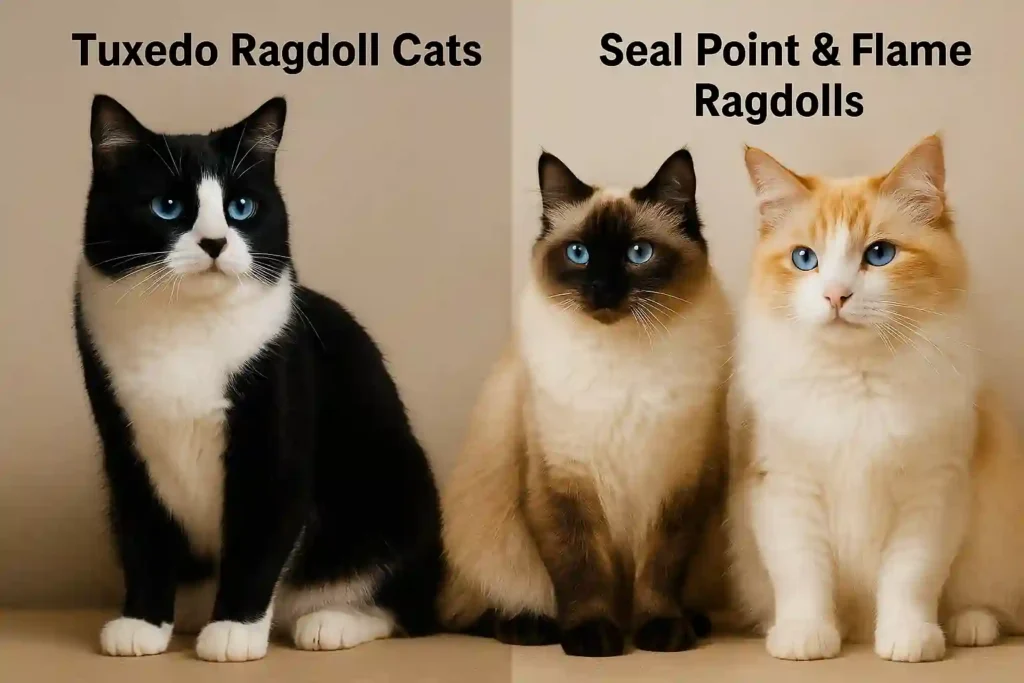
When you meet a tuxedo Ragdoll, you’ll spot the tuxedo markings at once. Compare:
| Feature | Tuxedo Ragdoll Cat | Seal Point Ragdoll | Flame Ragdoll |
|---|---|---|---|
| Base Coat | Solid black | Light cream or ivory | White |
| Markings | Bright white bib, paws, blaze | Chocolate-brown on mask & limbs | Warm apricot on points |
| Gene Influence | White-spotting + colorpoint gene | Colorpoint inhibitor gene | Colorpoint inhibitor gene |
| Official Recognition | Not in CFA/TICA list | Recognized by CFA and TICA | Recognized by CFA and TICA |
Understanding Ragdoll Color Genetics
Genes decide coat patterns. The Siamese gene (also known as the “colorpoint inhibitor” gene) restricts pigment to specific points. A second white-spotting gene dots the coat with white. Only when both align, do you get a black and white ragdoll kitten.
Ethical breeders conduct health tests such as HCM and PKD, adhere to ethical breeding practices, and utilize DNA panels to enhance success rates.
HCM (Hypertrophic Cardiomyopathy) Test:
There is a description of the HCM test. This test screens for a genetic heart condition that causes the walls of a cat’s heart to thicken, potentially leading to heart failure. Ethical breeders use DNA tests to identify carriers and prevent passing it on.
PKD (Polycystic Kidney Disease) Test:
There is a description of the PKD test. PKD is a hereditary condition that causes fluid-filled cysts to form in the kidneys, leading to kidney failure over time. Breeders screen with ultrasound or genetic testing to ensure healthy breeding lines.
How Rare Are Black and White Ragdoll Cats?
You’ll rarely see a tuxedo kitten in every litter. Reasons include:
- Low mutation rate: Few cats carry both genes.
- Selective focus: Some catteries favor standard colors.
- High demand: Rarity drives up interest and price.
- Waitlists: Many breeders maintain lists that span several months.
To improve your odds, contact several CFA/TICA-registered catteries. Ask about past black and white ragdoll cats, review health certificates, and verify their socialization routines.
Finding & Buying a Black and White Ragdoll Kitten
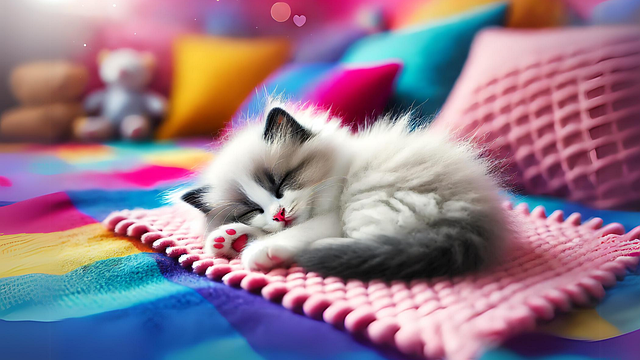
Where to Find Black and White Ragdoll Cats
- CFA & TICA Registries
- Use official directories to search for member catteries that list black and white ragdoll cats for sale.
- Cat Shows
- Inspect adult black and white Ragdoll cat specimens, meet breeders, and learn about upcoming litters.
- Online Communities
- Reddit’s Ragdoll subreddit or USA-based Facebook groups often share leads on tuxedo ragdoll kittens.
Buying vs. Adopting a Ragdoll Kitten
- Buying: Guarantees pedigree, genetic clearances, and a structured hand-raising program.
- Adopting: Breed-specific rescues sometimes list tuxedo cats. Fees go to welfare efforts, but colors aren’t guaranteed.
Before you decide, verify:
- Parent health clearances (HCM, PKD)
- Kitten socialization protocol
- State cattery licenses and insurance
Personality Traits of Black and White Ragdoll Cats
Every Ragdoll—seal point, flame, or tuxedo—shares a signature temperament:
- They flop into your arms, craving contact.
- They greet guests with calm curiosity, not fear.
- They alternate quiet loafing with short play sessions.
You’ll love their predictable cat ragdoll personality if you value a loyal, low-drama companion.
Grooming & Care Requirements
Even though they sport semi-long hair, Ragdolls stay mat-free when you follow these grooming guidelines: regular brushing.
Best Brush for Ragdoll Cats
Pick a slicker brush to lift the loose undercoat, then a wide-tooth comb to finish. Ten minutes weekly keeps coats smooth and highlights that gleaming sheen.
Recommended Litter Box for Ragdolls
A large, low-sided box makes entry easy. Choose unscented, clumping litter to respect sensitive noses. Scoop daily; swap litter weekly to prevent odors.
Health & Nutrition: Balanced Diet for Cats
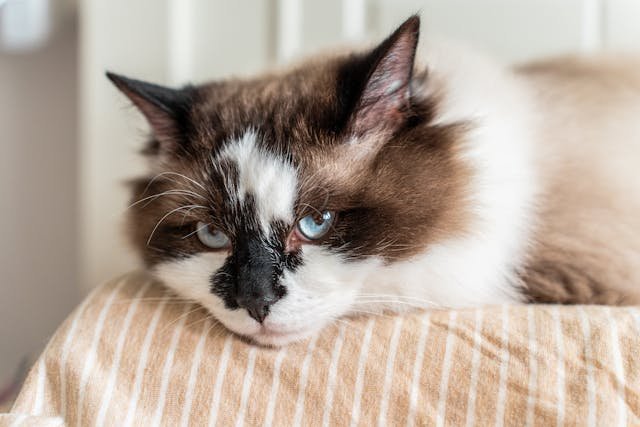
A balanced diet for cats builds muscle and boosts coat health:
- Prioritize high-protein recipes with chicken or fish.
- Include Omega-3 and Omega-6 for skin and shine.
- Control portions to prevent obesity.
- Offer wet food or fresh water to keep them hydrated.
Routine veterinary exams should include screenings for HCM and PKD to facilitate early intervention.
USA-Specific Tips for New Owners
- State Regulations
- Some states mandate cattery licenses or limit the number of litters. Check local rules.
- Feline-Savvy Vets
- Seek specialists who know pedigree cat needs.
- Breed Rescue Networks
- Even if you adopt a standard color, these groups share care tips and referrals.
- Owner Communities
- USA Facebook and Reddit groups swap advice on everything from the best brush for ragdoll cats to finding a black cat with white markings.
Frequently Asked Questions
Q: Can you get a black and white Ragdoll cat?
Yes. A rare gene combo yields tuxedo kittens. Though TICA and CFA don’t list this pattern, reputable breeders can register and track pedigrees for these rare cats.
Q: Are black and white Ragdoll cats real?
Absolutely. They occur when point-color genes meet white-spotting genes. You’ll find tuxedo ragdoll cats for sale listings, though they’re scarce.
Q: How rare are black and white Ragdoll cats?
Very rare. Only a fraction of litters produce these tuxedo-patterned kittens. Many breeders keep multi-year waitlists.
Q: What grooming does a Ragdoll cat require?
Weekly brushing with a slicker brush and comb helps prevent mats and preserve that silky texture. You’ll maintain their signature soft, flowing coat.
Conclusion
A black and white Ragdoll cat blends dramatic contrast with the breed’s hallmark cat personality: a docile, affectionate, and gentle nature. Though you’ll hunt through waitlists and breeder networks, bringing home a tuxedo, Ragdoll rewards you with a loyal, captivating companion. From understanding the “colorpoint inhibitor” gene and Ragdoll cat colors to mastering grooming with the best brush for ragdoll cats and choosing the recommended litter box for ragdolls, you now have the blueprint for welcoming and caring for your rare tuxedo Ragdoll in the USA.

